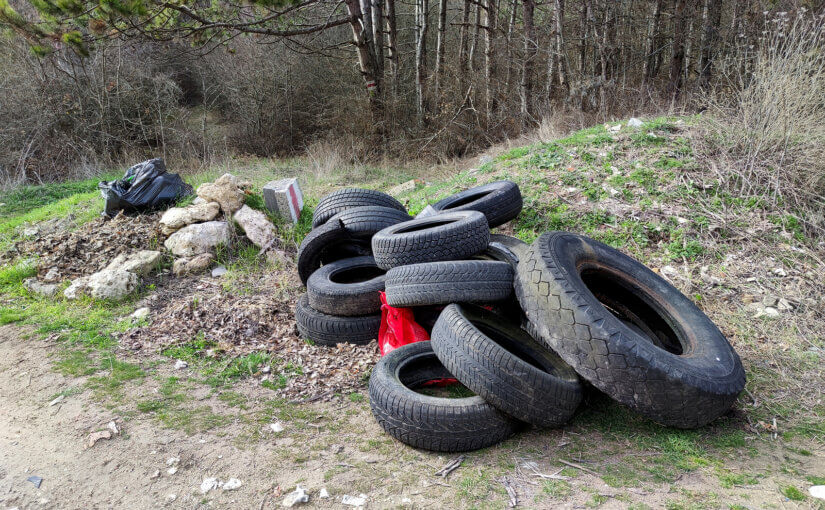Disposing of your car tyres requires serious care and attention because of the materials used to make them. Because they aren’t degradable, your tyres need to be recycled and safely disposed of in a specific way.
Can I put tyres in a skip?
Unfortunately, the answer is no. You can’t throw tyres in a skip because of the materials they’re made from. They need to be disposed of differently to other general waste items to prevent any issues.
When replacing and changing your tyres, thankfully, many places will recycle your scrap tyres when you buy a new set. This means you will have less to worry about when it comes to finding somewhere to recycle them.
However, not all garages and tyre places offer this kind of scheme. If this is the case you may need to contact a waste disposal company to ensure the tyres are disposed of correctly.
The environment
Tyres do not decompose, so you cannot simply leave them outside to break down. When tyres pile up in landfills or junkyards, they can begin to release chemicals into the air, ground, and water, altering the ecosystem.
Sadly, waste tyres release methane gas into the air just by sitting in the sun. This greenhouse gas increases our carbon footprint and can contribute to climate change. If a tyre catches on fire, it can release clouds of toxic black smoke into the air.
This smoke carries many chemicals used in tyre manufacturing that are extremely harmful to the environment. They are also why tyre fires cannot be extinguished with water like a usual fire. When water comes into contact with a tyre fire, the chemicals are washed away and can seep into groundwater stores and pollute our lakes and ponds.
Recycling centres
Recycling centres are undoubtedly the most eco-friendly way to dispose of old car tyres.
Tyres create waste converted into tyre-derived fuel, which is perfect for kilns in the cement-making process. The other components of steel and silica contained in the tyres also find uses as secondary raw materials. Shredded tyres can have leftover steel and textile components extracted and recycled during shredding.
Next, the pure rubber granulation goes into the manufacturing of panels to provide buildings with protection like insulation and sealing. The remaining is fine particle granulation, which becomes elastic filler material for sports grounds with artificial grass. Even finer broken-down materials, such as rubber power, can be used to construct roads and tarmac layers capable of absorbing noise.
Depending on your area, there should be a local recycling scheme, or at the very least, a recycling centre where you can drop off your tyres.
Reuse and repurpose
When your tyres become old and unusable, instead of disposing of them, why not look for ways you can personally use and repurpose them? Tyres can be great for multiple uses and can save you money. You can make a tyre into anything you like by painting and adding things to it.
- Chairs and ottomans
- A tyre swing
- A cosy dog bed for your pet to sleep
- Sandboxes
- Hanging planters
These are just some ideas of the many things you can do with old tyres. Check out Pinterest for further inspiration on transforming your old tyres into something useful.
Do’s and don’ts of tyre disposal
When it comes to disposing of your tyres, you need to ensure this is done responsibly, or you could end up with a fine for disposing of them incorrectly. Whole tyres are banned from UK landfills and have been since 2002, and end-of-life tyres were only forbidden from UK landfills due to the 2006 EU Landfill Directive.
Do
- Upcycle/repurpose your tyres for eco-friendly purposes
- Contact a local garage to see if they can dispose of the tyres for you
- Visit your local household waste recycling centre to drop off your tyres
Don’t
- Put your tyres in a skip
- Burn them
- Fly-tip your tyres in public places
So, although you can’t conveniently dispose of car tyres in a skip, there are still many great ways to recycle old car tyres safely and responsibly and ensure the impact on the environment is minimal.
